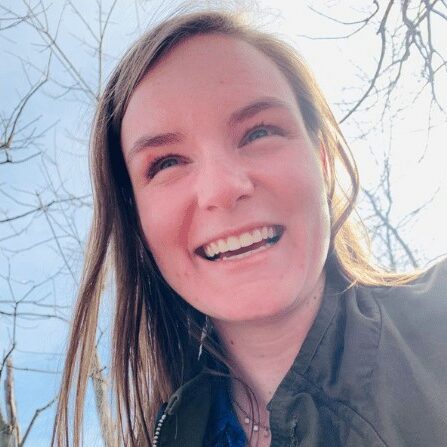Virginia Henderson Nursing Theory: Explainer and Examples

You probably know of Florence Nightingale, the lady with the lamp, but did you know that there is also a first lady of nursing? Virginia Henderson was an icon of nursing thought leadership in the 20th century and worked to modernize and reconceptualize the nursing profession. What makes her work special, and what should every nurse know about the Virginia Henderson nursing theory?
Frameworks and nursing theories create a foundation for clinical practice, research, and professionalism. While you might not think about theories much while you’re emptying Foleys and passing medications, frameworks like Swanson’s theory and Jean Watson’s theory offer unique perspectives on the nursing profession.

Virginia Henderson. Source: Working Nurse
Who Was Virginia Henderson?
Virginia Henderson was a pioneering nurse theorist, researcher, and author who significantly influenced the development of nursing. Born in Kansas City, Missouri, Henderson took interest in nursing during World War I.
Henderson graduated from the Army School of Nursing in 1921 and went on to pursue her bachelor’s and master’s degrees from Teachers College, Columbia University. She taught and researched at several nursing schools during her career, and wrote several textbooks as well.
While Florence Nightingale developed initial models of nursing based on cleanliness and other necessities, the nursing profession had evolved significantly by Henderson’s time. The development of antibiotics, shortened hospital stays, and an expanded understanding of disease meant that nursing theories needed to be updated as well.
Henderson’s description of nursing, published in 1955, focused on the nurse as an assistant to patients. Unlike Nightingale’s model, which was based on a prescriptive understanding of care, Henderson believed that nurses functioned as an extension of the patient.
The goal of nursing, under Virginia Henderson’s nurse theory, is to help the patient in the way that they would help themself if they were able to. She also argued that nurses could reform health systems by encouraging patients to make medical decisions for themselves.
Today, many nursing leadership organizations are pushing for more baccalaureate-prepared nurses. Virginia Henderson was one of the first advocates for university education for nurses. She was also a staunch supporter of universal healthcare, and railed against the for-profit medical model, writing and advocating for the nursing profession until her death in 1996.
What Is the Virginia Henderson Nursing Theory?
In her Nature of Nursing writings, Henderson laid out a grand theory, stating that healthcare grows increasingly complex and that nursing care must evolve with technology and science. She believed that the nursing profession had an opportunity to actively contribute to patient outcomes — that nurses do not simply follow and comply with physician orders, but are independent clinicians with a unique skill set. Henderson’s theory outlines basic needs:

Additionally, Henderson outlined four major concepts:
1. The Individual
Individuals (or patients) have basic health needs and require assistance to achieve either independence or a peaceful death. The mind and body are interrelated and cannot be separated. Every individual has biological, psychological, spiritual, and sociological components, and is more than the sum of their parts.
2. Environment
One’s environment is the setting in which they learn unique patterns of living. Every external condition influences and affects life and development. Individuals live in relationships with families, and the community impacts families and individuals. Basic nursing care means providing care so that the patient can satisfy the 14 basic needs without aid.
3. Health
Henderson’s definition of health is rooted in her 14 needs, and nurses work to help patients meet these needs while stressing health promotion and cure of disease. Optimal health is a challenge, affected by age, cultural background, physical capabilities, intellectual abilities, and emotional balance.
4. Nursing
It’s the nurse’s role to help individuals who are unable to meet their 14 basic needs, assisting them in life activities with the goal of gaining independence. Nurses carry out physicians’ therapeutic plans, and individualized care is the result of nursing creativity. Henderson believed that nurses were scientific problem solvers and that nurses must “get inside the patient’s skin and supplement his strength, will, or knowledge according to his needs.”
Virginia Henderson Nursing Theory in Action: 2 Examples
What does this theory look like when applied to nursing clinical practice? Let’s go through some examples.
Applying the Virginia Henderson Nursing Theory to Post-Surgery Care
Mrs. Johnson, a 72-year-old patient, has been admitted to a med-surg unit following a hip replacement surgery. Here’s how a nurse might meet Mrs. Johnson’s 14 needs during this time:
- Breathing normally: Assessing respiratory rate and oxygen saturation, ensuring she’s not experiencing postoperative respiratory complications.
- Eating and drinking adequately: Helping Mrs. Johnson transition from clear liquids to a regular diet, monitoring her intake, and assisting with meals as needed.
- Eliminating body wastes: Helping Mrs. Johnson use a bedpan initially, assisting her to the bathroom as she becomes more mobile, and teaching her how to safely use assistive devices.
- Moving and maintaining desirable postures: Teaching proper positioning in bed and assisting with early mobilization per the physical therapist’s instructions.
- Sleeping and resting: Managing pain with prescribed medications and helping to create a comfortable environment for rest.
- Selecting suitable clothes: Assisting in choosing and putting on comfortable, easy-to-manage clothing that doesn’t interfere with her incision or mobility.
- Maintaining body temperature: Monitoring Mrs. Johnson’s temperature and adjusting room temperature or blankets as needed.
- Keeping the body clean: Assisting with daily hygiene and teaching her how to safely manage personal care with her limited mobility.
- Avoiding dangers: Ensuring that the environment is safe, implementing fall prevention measures, and teaching her how to call for assistance.
- Communicating: Encouraging Mrs. Johnson to express her needs, concerns, and goals for recovery.
- Worshiping: Respecting Mrs. Johnson’s spiritual needs and arranging for a visit from the hospital chaplain if desired.
- Working: Discussing usual daily activities and helping to plan how she can gradually resume them post-recovery.
- Playing and recreating: Providing Mrs. Johnson with activities she enjoys, such as books or puzzles, to occupy her time during recovery.
- Learning: Educating about her condition, post-operative care, and rehabilitation process.
Applying the Virginia Henderson Nursing Theory to Type II Diabetes
Mr. Rodriguez, a 45-year-old patient, has been admitted to the hospital with a new diagnosis of type 2 diabetes. Here’s how a nurse might apply Henderson’s theory to this patient:
- Breathing normally: The nurse assesses Mr. Rodriguez’s respiratory rate and pattern, noting any signs of diabetic ketoacidosis.
- Eating and drinking adequately: Working with a dietitian to educate on diabetic diet principles, teaching him about carbohydrate counting and balanced meals.
- Eliminating body wastes: Monitoring urine output and teaching him about the importance of regular kidney function tests for diabetics.
- Moving and maintaining desirable postures: Encouraging Mr. Rodriguez to engage in regular physical activity, explaining its role in managing blood glucose levels.
- Sleeping and resting: Discussing the importance of consistent sleep patterns in managing diabetes and helping Mr. Rodriguez establish a bedtime routine.
- Selecting suitable clothes: Advising on proper foot care and selecting appropriate footwear to prevent diabetic foot complications.
- Maintaining body temperature: Educating about monitoring for signs of infection, as diabetics can be more susceptible to temperature changes due to illness.
- Keeping the body clean: Teaching Mr. Rodriguez about proper skin care and hygiene, emphasizing the importance of preventing infections.
- Avoiding dangers: Instructing on how to recognize and manage hypoglycemia and hyperglycemia.
- Communicating: Encouraging Mr. Rodriguez to express his feelings about his new diagnosis and discussing strategies for communicating his needs to family and healthcare providers.
- Worshiping: Respecting Mr. Rodriguez’s spiritual beliefs and discussing how they might influence his diabetes management (e.g., fasting practices).
- Working: Planning how to manage his diabetes while at work, including timing of meals and medication.
- Playing and recreating: Discussing how Mr. Rodriguez can maintain his hobbies and social life while managing his diabetes.
- Learning: Providing comprehensive diabetes education, including blood glucose monitoring, medication management, and lifestyle modifications.
Use the Virginia Henderson Nursing Need Theory in a New Role
Ready to grow your nursing career? IntelyCare has opportunities for LPNs, RNs, CNAs, and NPs. Learn more when you create a job seeker account and receive the latest nursing roles right in your inbox.
